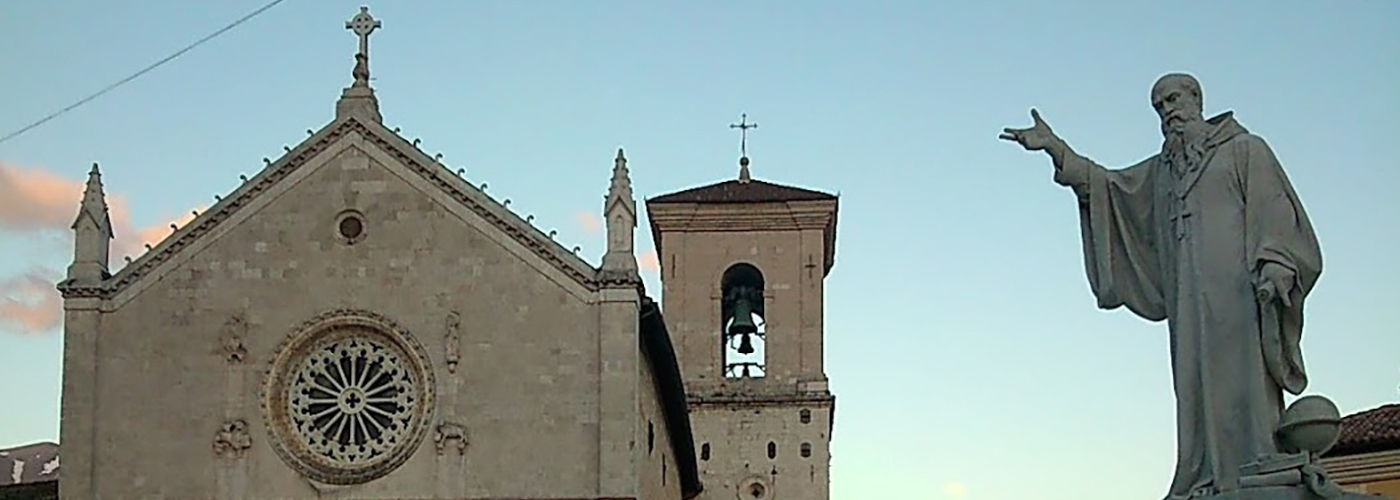A Historian’s Perspective
By Martin Knight

The publication in March 2017 of Rod Dreher’s long-awaited The Benedict Option: A Strategy for Christians in a Post-Christian Nation has prompted some serious debate over the question of the Church’s obligations to conservation and evangelisation in the post-Christian West. Much of the reaction has taken the form of criticism, the majority of which was not unexpected for those who have long been readers of Dreher’s blog at The American Conservative. For those unfamiliar with the concept of the Benedict Option (a wider proposal that predates the publication of the book by some years), it is Dreher’s call for orthodox Christians—Eastern Orthodox, Roman Catholic, or Protestant, the last most likely Evangelical—to withdraw from a culture war that he judges largely lost anyway, turning their energies instead toward the formation of a thick Christian culture that hands down the Faith within their communities.
The name consciously hearkens back to the conclusion of Alasdair MacIntyre’s After Virtue, and his hope that a new, “doubtless very different” St Benedict might shuffle off the mortal coil of the Western political imperium in exchange for smaller, cultivated Christian societies. Dreher’s book does two things. First, he sounds the alarm about the bad air in the mine shaft in hopes of awakening Christians grown complacent about broader cultural shifts in American society—still vainly imagined to be quite friendly or at least accommodating towards traditional Christianity. Second, he offers a loose “how-to” guide with practical tips (and one hopes more will appear in future) for families hoping to weather the storm.
Critiques have issued from a number of quarters, including those still invested in one side or the other of the culture wars (indeed, MacIntyre seems to have distanced himself from the idea, though without convincingly indicating that he has read Dreher firsthand). Some caution against the potentially unhealthy power dynamics that can arise from communities that seek purity, though Dreher includes similar warnings in his book, recalling Aleksandr Solzhenitsyn’s observation that “the line dividing good and evil cuts through the heart of every human being”. Christian communities should not seek utopia, but rather a humble and continual acceptance of our shared fallen state and reliance on God’s grace. Others argue that fleeing to the mountains or adopting Anabaptist isolationism is not a proper answer to the Great Commission; they’re not wrong, and Dreher repeatedly insists this is not his meaning. Careful reading of the book vindicates him, though this objection can be forgiven: one can repeat with mounting levels of exasperation, “I don’t mean withdrawal from society!”, but if one’s entire model is framed in the language of withdrawal, such nuance is likely to be overlooked.
This essay is an attempt to grapple with the Benedict Option from a slightly different angle. Being based upon an analogy to a historical person and event (St Benedict and the birth of Western monasticism), Dreher’s proposal attracts both arguments against the validity of this comparison and imitators championing alternative figures from history. For example, the “Sophia Option”, proposed by Michael Martin of Marygrove College, and the “Constantine Project”, offered by John Mark Reynolds, founder of the eponymous Saint Constantine School in Houston, both come with arguments that Dreher’s vision of the problem and its solutions is incomplete, though Martin and Reynolds formulate their objections in different ways. A historical perspective on St Benedict’s moment may help clarify the discussion.
Martin’s objection to Dreher is based on the question of motivation. On the Angelico Press blog, he envisions a second baptism of our consciousness, one that reminds us of God’s interpenetration of Nature, that the world around us is inherently sacramental. Martin describes his Sophia Option as “a product of my long immersions in sophiology and phenomenology and the insight that the Glory of the Lord is available to us now through the grace that inheres the world and can be disclosed by our presence to it”. Recovering our memory, as Christians, of this sacralised world will leave us no choice—I nearly wrote “option”—but to evangelise the world, because viewing the world as imbued with the Spirit will cause our lives to be imbued with the Message of that Spirit.
Martin’s blog posts were written before Dreher’s book was published, and there is no indication that he has read The Benedict Option; but in fact, he has no quibble with Dreher on this point. The latter writes extensively about the medieval conception of the universe as a cosmic order soaked with spiritual significance, and points to the late medieval mechanisation of our cosmology as one of the turning points of de-Christianisation. Martin writes that he is “not interested in a withdrawal from the allegedly sinful world, hiding with my wife and children in the bunker of our protective Christian bubble while we wait in a state of anxiety for the Parousia. The Parousia is always already happening. The Eschaton is within you.”
However, in his book Dreher insists that he himself is not calling for bunkers (though again, withdrawal rhetoric may confuse some, especially those who haven’t read the book). The re-sacralisation of the world, à la Charles Taylor, is central to the Benedict Option. In this sense the Sophia Option is arguably a specific instantiation of Dreher’s wider call for reform. Martin might insist that his real objection to the Benedict Option is that Dreher’s Benedict is to fear as Martin’s Sophia is to joy. Yet even here the dichotomy is not as sharp as it appears, especially when one looks at Martin’s lament over contemporary culture. Martin’s deservedly unfavourable comparison of Catholic to Waldorf schools sounds very much like Dreher’s own championing of classical academies against most other forms of Christian pedagogy, and the homophony continues in their treatment of liturgy. Again, the space between them is not as wide as it might be. Even allowing, however, that a deep undercurrent of anxiety runs throughout the Benedict Option, such anxiety need not be the grounds for criticism that Martin makes it out to be. His opposition between “cultural preservation” (Dreher) and “cultural renewal” (himself) may lead him to miss Dreher’s point that one cannot exist without the other.
It is of course good to quote 1 John 4:18, but one must not forget that one kind of fear is necessary to love: the proper fear of the Lord. When Benedict left Rome for Subiaco, he was driven by fear for his soul, a fear that evolved into a concern for the souls of those who joined him in his solitude and, even beyond that, into a care for the secular communities that grew up around the monasteries. Where is the line dividing such fear from love? When the Benedict Option speaks to the fear of parents worried by the increasing difficulty of transmitting the orthodox Christian Faith to their children, is their anxiety not an expression of their parental love? The love need not be strictly familial: Martin uses the image of the Magdalene running joyfully to announce the Resurrection to the Apostles, but she was able to do so only after having her own faith confirmed by her encounter with Christ in the garden. As Dreher insists in his book and on his blog, we need to be able to tell our story to ourselves before we can share it with the world around us.
The “fear” alleged to permeate the Benedict Option does not have to contradict the joy of Christian living, quite the contrary; it is the prick against which our modern minds kick, but it serves to turn us towards the joy of fully living the Faith as the scales fall from our eyes. Dreher’s is a necessary wake-up call, given how many Christians in the West fail to see the need for a radical reorientation of priorities to avoid being engulfed by the rising tide of a cultural nihilism for which the world is dead matter devoid of spiritual significance. I can attest from personal experience to the difficulty of trying to get undergraduate history students, for example, to conceive of an alternative way of perceiving the world. Thinking outside not only of one’s own head but outside of one’s own culture, is a difficult process. People will not begin this work, however, so long as they are content with their current mode and level of Christian practice.
If the historical analogy can be pressed further, it may clarify the (supposedly small) difference between Dreher and Reynolds, who have debated the merits of their respective visions on the Circe Institute website (Dreher also praises Reynolds’ school as an exemplar in his book). If Martin argues for a quieter, more personal revolution with his Sophia Option, Reynolds’ Constantine Project hopes to build a new bulwark of Faith against the tide of barbarism, a modern-day Constantinople to a decaying Rome. From a historical standpoint, this may be even more problematic. While Martin places himself in contraposition to Dreher, Reynolds and Dreher claim to share largely common ground. But while the Sophia Option is really just a particular aspect of the Benedict Option, while the Constantine Project seems to suggest a quite different vision.
The model Reynolds proposes, unsurprisingly, is the first Christian emperor, who left the increasingly geographically insignificant capital of Rome nearly two centuries before Benedict did the same. Instead of becoming a monk, however, Constantine (who was probably not even a believing Christian at the time) transferred the seat of the Empire to the Bosphorus, where it survived for another millennium and more. Analogising to contemporary America, Reynolds claims that the coastal cultural strongholds have been lost to secularism, so we must relocate and build a new Christian imperium somewhere else (in Reynolds’ case, Houston). The Christian population of the United States is so substantial, Reynolds argues, that it cannot be apolitical, but must embody a remnant of Christendom somewhere, though the geography of that somewhere is flexible. D.C. yesterday, Houston today, Singapore tomorrow.
The problem, as Dreher points out, is that the narrative of liberal, godless seaboards and a conservative, Christian interior no longer reflects the American reality. The overwhelming majority of Americans profess some form of Christianity, but the resemblance between their creed and the historical Faith is passing. True, we need Christian communities, and some form of political organisation will necessarily evolve amongst them, even if it is largely informal. Communities like Hyattsville, Maryland, which Dreher also profiles in his book, can come together around a Catholic academy, for instance, and their members may even run for local political office as a matter of course. Villages and even cities grew up around Benedictine monasteries in the early Middle Ages, craving the order offered by these institutions as the wider culture crumbled around them. The monks contributed to the Christianisation of these communities, which naturally developed a Christianised political life.
But this is a different thing from Reynolds’ vision of some new incarnation of Justinian’s “long laws”, which helped protect Christians outside of the Empire. In recent American history, it was a supposed political protector of Christianity—then-Governor, now-Vice President Mike Pence—who signed the amendment gutting Indiana’s Religious Freedom Restoration Act, in a betrayal that Dreher cites as the “watershed” in American intolerance of Christian orthodoxy on sexual ethics. We can’t keep moving in a Hebrew peregrination through the desert in search of a political benefactor as the sand constantly shifts under our feet. For one thing, it is difficult enough for families, struggling with the ordinary requirements of holding a job or jobs and raising children, to try to establish a community like those profiled in the Benedict Option: is it realistic to suggest they uproot whenever the political wind changes? Moreover, the historical model seems severely flawed. Constantine didn’t found a New Rome in order to save Christianity, or even to save his soul: he was trying to save the very imperium that Benedict would later abandon.
As a result, Constantinople was able to defend the political borders of the Empire for a time, even projecting influence beyond them (and thus, to give credit where it is due, bringing Christianity to Bulgaria and Russia). But while the Empire survived in the East, it also fought a rearguard action against its own “barbarians”. By contrast with the Germanic invaders in the West, who were absorbed into Christianity because the Faith had found a way to survive outside of the collapsing political structure, many Christians in Syria and North Africa—even ultimately Anatolia—ended up compromising with their Muslim overlords over the centuries. Most eventually converted to avoid the burden of the jizya tax or to obtain political office. Meanwhile, the Arabs who had overrun the Empire did not become Christians.
No doubt this is simplistic: the trials of Christians in the contemporary Middle East witness to the enduring power of the Faith and the importance, especially in the modern period, of political protection from Russia. But the same trials also remind us that, if Christians became a minority in the birthplace of their Faith, it was partly because they were too closely allied to a political order which, like all human institutions, eventually collapsed (there is more to be said about the role of the East’s political Christianity in driving the Christian Levant and North Africa to heresy, but space is limited). Such criticism, as Dreher insists, implies no denial of the political dimension of Christianity. But it does remind us of the need for perspective. Benedict helped to make Christianity independent of Rome, and so allowed it to survive; Constantine helped wed Christianity to the Empire, and thus it retreated with the imperial frontier. Therein lies, to my mind, the central motivating point of the Benedict Option, as well as a powerful reminder of its necessity.
Martin Knight is a medieval historian currently teaching in the USA.

